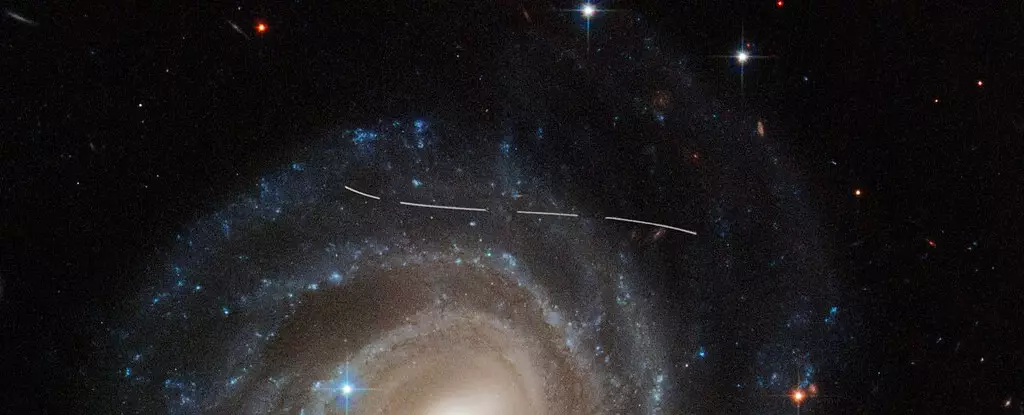The Hubble Space Telescope, despite being in operation for over thirty years, continues to surprise astronomers with new discoveries. Recently, an international team of citizen scientists collaborated with astronomers from the European Space Agency to identify a sample of over one thousand asteroids in Hubble’s archival data. This innovative approach utilized machine learning algorithms to sift through decades-old data, opening the door to further exploration of datasets beyond just asteroids.
Astronomers have long considered asteroids to be remnants from the formation of the Solar System billions of years ago. These objects vary in size, from pebble-sized rocks to planetoids, and observing them presents a significant challenge due to their faint nature and constant motion. However, Hubble’s rapid geocentric orbit allows it to capture the distinctive trails left by wandering asteroids in its exposures. By analyzing these trails, astronomers can determine the asteroids’ distances and estimate the shapes of their orbits, providing valuable insights into the formation and evolution of the Main Asteroid Belt.
One prevailing theory suggests that small asteroids are fragments of larger asteroids that have collided and broken down over time. However, an alternative hypothesis posits that these small bodies have remained relatively unchanged since their formation billions of years ago. Astronomers have struggled to explain why these smaller asteroids have not accumulated more dust from the circumstellar disk surrounding the Sun during their formation. The recent discoveries made through the Hubble Asteroid Hunter project have shed new light on this debate and provided a wealth of data for further research.
In 2019, the Hubble Asteroid Hunter project was launched, engaging over 11,000 citizen-science volunteers to scour 37,000 Hubble images from the past 19 years. By leveraging the power of machine learning algorithms, the volunteers were able to identify over 1,700 asteroid trails, with more than a thousand corresponding to previously uncatalogued asteroids. This collaborative effort not only expanded the database of known asteroids but also demonstrated the potential for similar projects with other observatories.
The success of the Hubble Asteroid Hunter project has paved the way for future endeavors with other space telescopes, such as NASA’s Spitzer Space Telescope and the Stratospheric Observatory for Infrared Astronomy (SOFIA). As the James Webb Space Telescope (JWST) accumulates more data, the same methodology could be applied to its archival data, furthering our understanding of the Solar System’s asteroid population. The next phase of the HAH project will involve characterizing the orbits, rotation periods, and other properties of the newly discovered asteroids, adding another layer of depth to our knowledge of these celestial objects.
By harnessing the collective efforts of citizen scientists, astronomers, and cutting-edge technology, the Hubble Space Telescope continues to reveal hidden treasures within its vast archives. As we delve deeper into the mysteries of the cosmos, each new discovery brings us one step closer to unraveling the complexities of the universe. The unexpected findings of the Hubble Space Telescope serve as a reminder of the boundless potential for innovation and exploration in the field of astronomy.



Leave a Reply